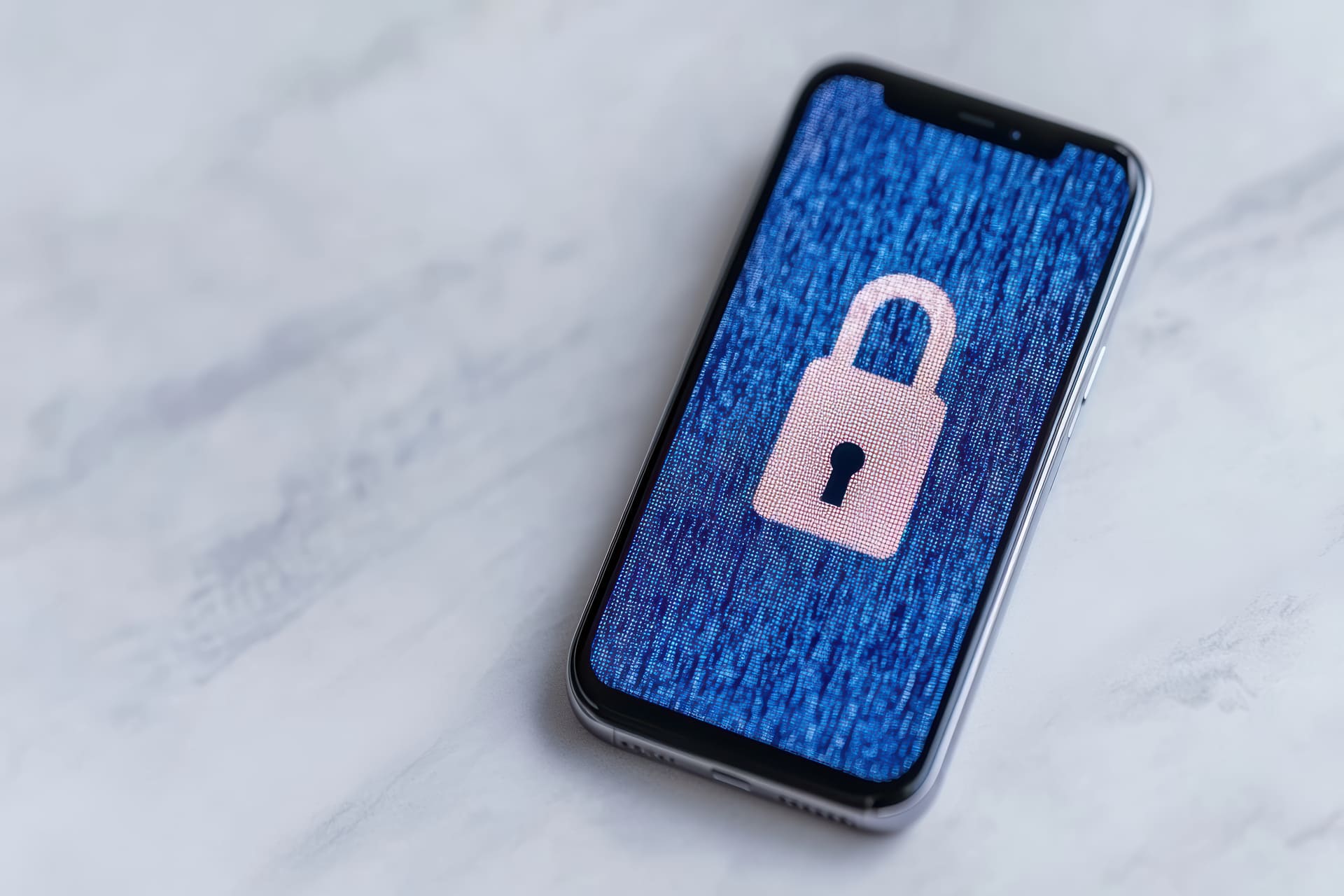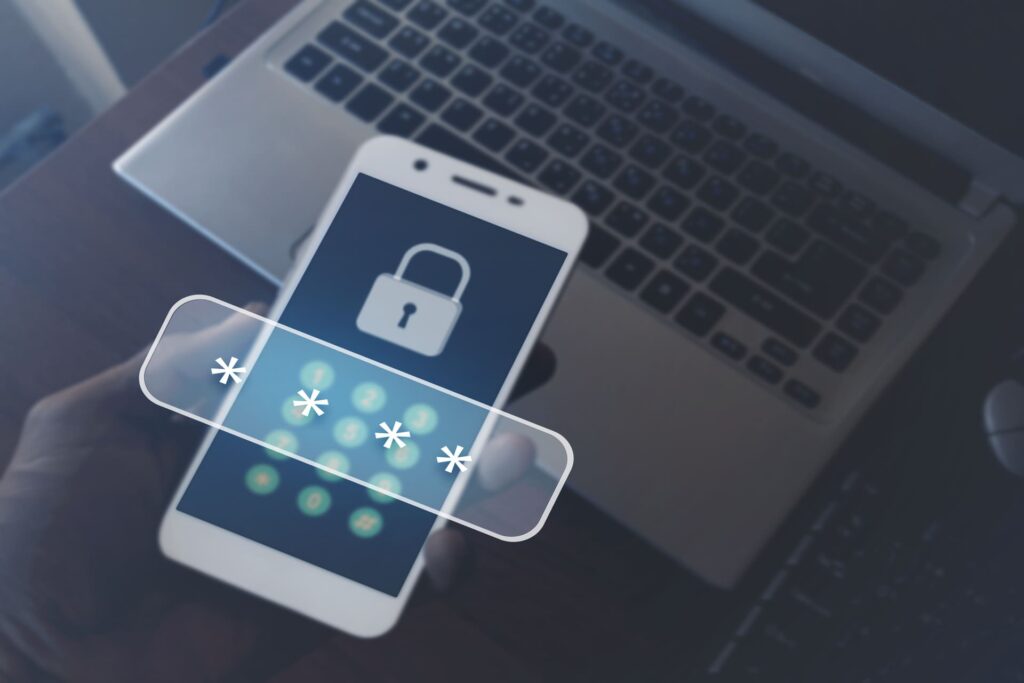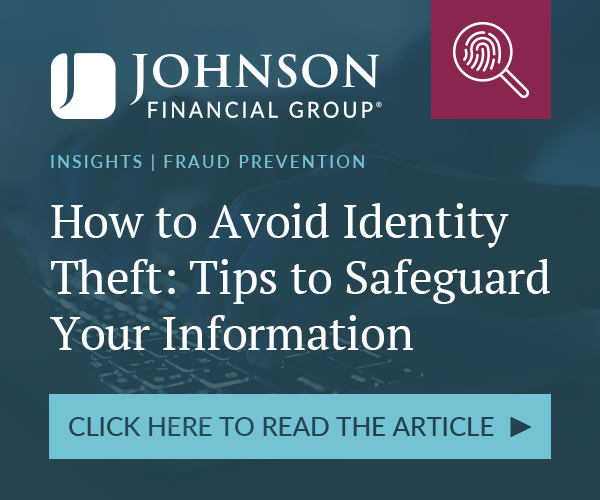Smishing is a cybersecurity threat that uses deceptive text messages to steal sensitive business data and compromise company networks.
Your employees receive dozens of text messages daily, and attackers know they’re more likely to trust SMS communications than suspicious emails. When cybercriminals successfully execute a smishing attack against your business, the consequences can be devastating.
They can steal customer data, compromise financial accounts, install malware on company devices, and potentially shut down your operations entirely.
At CMIT Solutions, we’ve been protecting businesses from evolving cyber threats for over 25 years. Our comprehensive approach to what is cyber security helps organizations defend against smishing and other sophisticated attacks that target your most vulnerable entry point: your employees’ mobile devices.
We’re honored to be recognized as a leading Managed Service Provider and have consistently ranked on Entrepreneur Magazine’s Franchise 500 list for more than a decade.
How Does Smishing Work?
Smishing attacks follow a methodical process designed to exploit human psychology and technical vulnerabilities. Knowing each step helps businesses recognize and prevent these sophisticated social engineering attempts.
- Target Selection and Research: Attackers identify potential victims using publicly available information about your business and employees. They may purchase data from previous breaches or use social media to gather names, phone numbers, and company details that make their messages appear legitimate.
- Message Crafting and Personalization: Cybercriminals create convincing text messages that impersonate trusted entities like banks, shipping companies, or government agencies. They incorporate personal details and create scenarios that demand immediate action, such as account security alerts or package delivery problems.
- Technical Delivery and Spoofing: Attackers use various methods to mask their identity, including email-to-SMS gateways, burner phones, or number spoofing techniques. This allows them to make their messages appear to come from legitimate phone numbers or short codes that recipients recognize.
- Victim Interaction and Manipulation: The smishing message prompts recipients to click malicious links, call premium-rate numbers, or reply with sensitive information. Attackers leverage psychological triggers like urgency, fear, or curiosity to override recipients’ natural skepticism.
- Data Collection and Exploitation: Once victims interact with the message, attackers can steal login credentials through fake websites, install malware on mobile devices, or trick victims into providing financial information over the phone. This stolen data is then used for identity theft, financial fraud, or further targeted attacks.
Hypothetical scenario:
An employee receives a text claiming to be from your company’s bank, warning of suspicious account activity and requesting immediate verification through a provided link. Without proper training, they might click the link and inadvertently provide the attacker with access to your business banking credentials.
📌 From research to spoofing, smishing follows a predictable chain. Recognizing each stage, from message crafting to exploitation, equips businesses to break the cycle before damage occurs.
Why Are Smishing Attacks Particularly Effective?
Smishing attacks succeed because they exploit fundamental differences in how people perceive and interact with text messages compared to other forms of communication. Unlike email phishing, which many users have learned to approach with skepticism, SMS messages benefit from an inherent trust factor that makes them particularly dangerous.
Research shows that SMS click-through rates hover between 8.9% and 14.5%, while emails have an average click rate of only 2%. This dramatic difference occurs because people view text messages as more personal and trustworthy communication channels.
Most individuals use SMS primarily for communicating with friends, family, and trusted businesses, creating a false sense of security around all incoming messages.
Mobile device vulnerabilities compound this problem significantly. On desktop computers, users can hover over links to preview destinations before clicking, but smartphones lack this protective feature.
The smaller screens make it difficult to examine URLs closely, and many mobile browsers don’t display full web addresses, making it nearly impossible to identify malicious websites at first glance.
The widespread adoption of BYOD policies in modern workplaces creates additional attack vectors that didn’t exist when employees used only company-issued devices. Personal smartphones often lack enterprise-grade security controls, and employees may install apps or browse websites that expose them to additional risks.
When the same device handles both personal and business communications, the line between personal and corporate security becomes dangerously blurred.
| Communication Method | Average Click Rate | Trust Level | Security Awareness |
|---|---|---|---|
| SMS Messages | 8.9% – 14.5% | High | Low |
| Email Messages | 2.0% | Medium | High |
| Phone Calls | Variable | Medium | Medium |
The FCC’s implementation of STIR/SHAKEN protocols in 2020 made scam phone calls easier to identify, but did not extend the same protections to text messaging, causing many cybercriminals to shift their focus from voice-based attacks to SMS-based schemes.
The FCC provides guidance on mobile security threats and protective measures businesses can implement.
Common Types of Smishing Scams
- Banking and Financial Institution Fraud: Scammers impersonate banks, credit unions, or payment processors to claim suspicious account activity or security breaches. These messages often request immediate verification of account details or threaten account closure if recipients don’t respond quickly to the provided link.
- Package Delivery Deception: Attackers pose as shipping companies like FedEx, UPS, or USPS to claim delivery problems or additional fees required for package release. These scams are particularly effective during holiday seasons when people expect numerous deliveries and may not question unexpected shipping notifications.
- Tech Support Impersonation: Cybercriminals pretend to represent major technology companies, claiming the recipient’s device has been compromised or requires immediate security updates. They may request remote access to “fix” non-existent problems or direct victims to download malicious software disguised as antivirus tools.
- Government Agency Spoofing: Attackers impersonate IRS representatives, law enforcement agencies, or other government entities to threaten legal consequences or offer government benefits. These messages exploit people’s fear of authority and their desire to comply with official requests.
- Prize and Lottery Scams: These messages claim recipients have won significant prizes or money but must provide personal information or pay processing fees to claim their winnings. The promise of free money or valuable prizes can override logical thinking about the legitimacy of unexpected windfalls.
- Business Email Compromise via SMS: Attackers target employees by posing as executives, colleagues, or vendors, requesting urgent assistance with financial transactions or sensitive information. These attacks often succeed because they exploit workplace hierarchies and the pressure to respond quickly to apparent management requests.
- Account Verification Deception: Scammers claim that various online accounts require immediate verification due to security concerns or policy changes. They direct victims to fake websites that capture usernames, passwords, and other login credentials for legitimate services.
Why they work

Attackers use various impersonation tactics to make their messages appear legitimate and urgent. Each type targets different psychological triggers and exploits specific trust relationships that people maintain with various organizations.
Knowing the differences between smishing and other attack methods helps businesses develop comprehensive protection strategies. Learn more about phishing vs smishing to understand how these related threats target different communication channels.
⚠️ Every scam leverages a different psychological hook: fear of authority, urgency in finance, curiosity with prizes, or pressure from “executives.” Employees must be trained to spot these patterns.
Real-World Smishing Examples and Warning Signs
Knowing actual smishing attempts helps businesses recognize similar attacks and train employees to identify red flags before responding to suspicious messages. These real-world examples demonstrate how attackers craft convincing messages that appear legitimate at first glance.
- Fake package delivery notifications that read: “FedEx: Package delivery failed. Confirm your address and pay $3.95 delivery fee: [malicious link].” The message appears legitimate because it uses the FedEx brand name and requests a small, reasonable-sounding fee.
However, several warning signs reveal its fraudulent nature: the sender’s phone number doesn’t match FedEx’s official numbers, the URL doesn’t lead to the official FedEx website, and legitimate shipping companies don’t request payment via text message links.
- Banking impersonation represents another prevalent attack vector. A typical message might state: “URGENT: Suspicious activity detected on your business account. Verify your identity immediately to prevent account closure: [fake link].”
While this message creates genuine concern for business owners, it contains several red flags: banks don’t send urgent security notifications via text, legitimate financial institutions never request login credentials through SMS links, and the sense of urgency is designed to bypass careful consideration.
- Government impersonation scams often target businesses during tax season: “IRS NOTICE: You owe $2,847 in unpaid taxes. Avoid legal action by calling 555-0123 immediately.” This type of smishing text exploits business owners’ fear of tax problems and legal consequences.
Warning signs include the IRS’s policy of never initiating contact via text message, the demand for immediate payment, and the use of non-official phone numbers.
Other warning signs
Key warning signs that apply across all smishing attempts include:
- Unexpected messages from supposedly familiar organizations
- Urgent language demanding immediate action
- Requests for sensitive business information via text
- Links to websites that don’t match the claimed sender’s official domain
- Poor grammar or spelling that professional organizations wouldn’t use
- Generic greetings that don’t include your actual name or account information
| Red Flag Indicator | What to Look For | Legitimate Alternative |
|---|---|---|
| Suspicious Phone Numbers | 4-digit numbers, unfamiliar area codes | Official short codes from verified senders |
| Urgent Language | “Act now,” “Immediate action required” | Professional, non-threatening communication |
| Generic Greetings | “Dear customer,” “Account holder” | Personalized messages with your actual name |
| Suspicious Links | Shortened URLs, unfamiliar domains | Direct links to official websites |
| Request for Sensitive Data | Passwords, SSN, credit card numbers | Never requested via text message |
The most sophisticated attacks may avoid some obvious red flags by using better grammar and more convincing details, making employee education and verification procedures critical for business protection. When in doubt, employees should always contact the claimed sender through official channels before responding to any text message requests.
Additional reading: what is smishing and phishing
How to Prevent Smishing Attacks

Effective smishing prevention requires a multi-layered approach that combines technical solutions, organizational policies, and individual awareness. Each layer provides additional protection when other defenses may fail.
- Employee Education and Awareness Training: Regular cybersecurity training helps staff recognize smishing attempts and understand proper response procedures. Training should include real examples of smishing messages, an explanation of common tactics, and clear guidelines for verifying suspicious communications through official channels.
- Mobile Device Management (MDM) Solutions: Enterprise MDM platforms allow businesses to enforce security policies, install protective apps, and monitor for suspicious activity across all company devices. These solutions can block malicious websites, prevent unauthorized app installations, and remotely wipe compromised devices.
- Multi-Factor Authentication Implementation: MFA adds essential protection even when attackers obtain usernames and passwords through smishing attacks. By requiring additional verification steps, businesses can prevent unauthorized access even when primary credentials are compromised.
- SMS Filtering and Security Software: Modern smartphones and carriers offer built-in spam filtering for text messages, while specialized security apps can identify and block known malicious links. These technological solutions provide automatic protection against many common smishing attempts.
- Clear Communication Policies: Establish and communicate policies about how your organization handles sensitive information requests. Employees should know that legitimate requests for business information will never come via text message and should always be verified through established channels.
- Regular Security Assessments: Periodic evaluations of your organization’s vulnerability to smishing and other cyber threats help identify weaknesses before attackers exploit them. Professional assessments can reveal gaps in training, technology, or procedures that need attention.
Prevention Strategies
| Prevention Strategy | Individual Responsibility | Organizational Responsibility |
|---|---|---|
| Education and Training | Stay informed about current threats | Provide regular cybersecurity training |
| Technical Protection | Use device security features | Implement MDM and filtering solutions |
| Verification Procedures | Always verify suspicious requests | Establish clear communication policies |
| Incident Reporting | Report suspicious messages immediately | Create easy reporting mechanisms |
💼 The strongest protection comes from combining human training with technical safeguards, MDM, MFA, SMS filtering, and regular policy updates, which all reduce vulnerabilities.
Organizations working with government contracts face additional cybersecurity requirements that make smishing prevention even more critical. CMMC (Cybersecurity Maturity Model Certification) compliance requires comprehensive mobile security controls and documented incident response procedures.
How to Respond to Smishing Attacks
Quick and proper response to suspected smishing attempts can prevent minor security incidents from becoming major data breaches. Following established procedures protects both individual employees and the entire organization.
- Immediate Containment Actions: Stop all interaction with the suspicious message immediately and avoid clicking any links or calling the provided phone numbers. If you’ve already clicked a link, disconnect your device from company networks and Wi-Fi to prevent malware spread.
- Device Security Assessment: Run antivirus scans on any device that interacted with the suspicious message and check for unusual app installations or system behavior. Change passwords for any accounts that may have been accessed from the compromised device.
- Incident Documentation and Reporting: Take screenshots of the smishing message and document all interaction details, including timestamps and any information that may have been disclosed. Report the incident to your IT department, security team, or managed service provider immediately.
- Official Verification and Confirmation: Contact the organization that the message claimed to represent using official phone numbers or websites to verify whether the communication was legitimate. Never use the contact information provided in the suspicious message itself.
- Account Security Review: Monitor bank accounts, credit reports, and online accounts for unusual activity, and enable additional security measures like account alerts and two-factor authentication where available. Consider placing fraud alerts with credit monitoring services if sensitive information was disclosed.
- Follow-up and Recovery Procedures: Work with your IT team to assess whether additional security measures are needed and ensure all potentially affected systems and accounts are secure. Document lessons learned to improve future response procedures.
Response Timelines
| Response Timeline | Immediate (0-1 hours) | Short-term (1-24 hours) | Long-term (1+ days) |
|---|---|---|---|
| Actions Required | Stop interaction, disconnect the device | Run security scans, verify legitimacy | Monitor accounts, update procedures |
| Key Personnel | Employee, immediate supervisor | IT team, security personnel | Management, compliance team |
| Documentation | Screenshot message, note the time | Complete incident report | Update security policies |
The Federal Trade Commission provides a comprehensive reporting mechanism for smishing attacks at reportfraud.ftc.gov, while the FBI’s Internet Crime Complaint Center at ic3.gov handles more serious cybercrime incidents. Additionally, forward suspicious text messages to 7726 (SPAM) to help carriers identify and block future similar attacks.
Knowing how smishing relates to other cybersecurity concepts helps businesses develop comprehensive protection strategies. Learn more about hashing vs encryption to understand how data protection technologies can help secure sensitive information that attackers target through these SMS attacks.
Protecting Your Business from SMS Phishing Attacks
Business-specific protection against SMS phishing requires comprehensive strategies that address both technological vulnerabilities and human factors. Organizations must consider how mobile devices integrate with their broader security infrastructure and ensure consistent protection across all communication channels.
Employee education forms the foundation of effective business protection, but it must go beyond basic awareness to include specific procedures for your organization.

Staff need to understand not only how to identify potential attacks but also whom to contact, what information should never be shared via text, and how your company’s legitimate communications will always be formatted and delivered.
Regular training updates ensure employees stay current with evolving attack methods and maintain vigilance against new threats.
Technical protection measures should integrate seamlessly with existing business systems while providing comprehensive coverage for mobile communications. Enterprise-grade mobile device management allows organizations to enforce consistent security policies, monitor for suspicious activity, and respond quickly when threats are detected.
These solutions can automatically block known malicious websites, prevent unauthorized app installations, and provide real-time threat intelligence about emerging smishing campaigns targeting your industry.
Information Policies
Policy development and enforcement create clear expectations and procedures that support both technical measures and employee training.
Effective policies should specify which types of business information may never be requested via text message, establish verification procedures for unusual requests, and create clear escalation paths when employees encounter suspicious communications.
📌 Technology alone isn’t enough. Organizations that build a culture of verification and reporting, reinforced by mobile security tools, stay far ahead of attackers.
Regular policy reviews ensure procedures remain current with changing threat landscapes and business needs. Integration with broader cybersecurity frameworks ensures that mobile security doesn’t create gaps in overall organizational protection.
SMS phishing attacks often serve as entry points for more sophisticated multi-vector attacks, so mobile security measures must coordinate with email security, network monitoring, and incident response procedures to provide comprehensive coverage.
Consider how a well-prepared business might handle a smishing attempt.
Hypothetical scenario: When an employee receives a suspicious text claiming to be from the company’s bank, they immediately recognize it as potentially fraudulent because they know the bank’s legitimate communication procedures, report it to the IT team using established channels, and help protect other employees by sharing the information through internal security alerts.
Regular assessment and improvement of mobile security measures help organizations stay ahead of evolving threats and ensure their protection remains effective.
Professional cybersecurity evaluations can identify vulnerabilities in current procedures, recommend improvements based on industry best practices, and provide objective assessments of organizational risk levels.
The financial impact of a successful smishing attack extends far beyond immediate data theft. System downtime, recovery costs, and business disruption can quickly escalate into significant losses.
Downtime Calculator
Estimate how much money your business loses during IT downtime. Use our IT downtime calculator to understand the true cost of cyber incidents and see how proactive cybersecurity measures protect your bottom line.
When to Call in Our Cybersecurity Experts
A professional cybersecurity assessment becomes essential when smishing attacks target your business repeatedly or when your current security measures fail to prevent successful attacks.
Signs that indicate the need for expert intervention include multiple employees reporting suspicious messages, successful compromises of business accounts or systems, and difficulty implementing consistent security policies across your organization.
CMIT Solutions brings over 25 years of cybersecurity expertise to help businesses develop comprehensive protection strategies that address current threats while anticipating future challenges. ConnectWise named CMIT Solutions Partner of the Year, the company’s highest partner honor, recognizing our commitment to excellence in managed IT services.
Our team understands how smishing attacks integrate with broader cybercrime campaigns and can help you develop layered defenses that protect against multiple attack vectors simultaneously.
Our managed cybersecurity services provide continuous monitoring, threat intelligence, and rapid response capabilities that many businesses cannot maintain internally.
We work with organizations to assess their current vulnerability levels, implement appropriate technical solutions, and develop training programs that create lasting security awareness among staff members.
Our approach includes 24/7 monitoring for our managed service customers, providing peace of mind and jumping into action should any problems arise.
See how we’ve helped businesses like yours build comprehensive cybersecurity defenses. Our recent work with Optyx demonstrates how proper IT management and security protocols protect multi-location businesses from cyber threats including smishing attacks.
Watch our case study to learn how we implemented seamless IT solutions that enhanced both security and operational efficiency across multiple locations. This comprehensive approach to cybersecurity and IT management ensures that businesses can focus on growth while we handle the complex technical challenges of protecting against evolving threats like smishing.
FAQs
What should I do if an employee has already clicked a smishing link?
Immediately disconnect the affected device from your network and run comprehensive malware scans using your current antivirus software. Contact your IT provider for a professional assessment, change passwords for any accounts accessed from that device, and monitor for unusual system activity or unauthorized access attempts that could indicate further compromise.
How can I verify if a text about account issues is legitimate?
Never use contact information provided in suspicious text messages to verify their authenticity. Instead, contact the organization directly using official phone numbers from their website or your account statements. Legitimate organizations will confirm whether they sent the message and can address any actual account concerns through secure channels.
What makes small businesses particularly vulnerable to these cyber threats?
Small businesses often lack dedicated IT security staff and comprehensive cybersecurity training programs while maintaining valuable customer data and financial system access. Attackers specifically target smaller organizations because they typically have fewer technical defenses in place, making successful attacks more likely than against larger enterprises with extensive security teams.
Should we allow personal mobile phone use for business communications?
Personal device use for business requires careful policy development and technical controls to maintain security. Consider implementing mobile device management solutions that can separate business and personal data, enforce security policies, and provide remote wipe capabilities if devices are compromised or lost.
How do smishing attacks differ from vishing and traditional phone scams?
While vishing uses voice calls to manipulate victims and traditional phone scams rely on direct conversation, smishing leverages the perceived trustworthiness of text messages and the difficulty of verifying links on mobile devices. Each attack method requires different prevention strategies, but all exploit psychological manipulation to trick victims into providing sensitive data or financial information.






